CHAUNCEY MALCOLM "CHAN" POWERS
|

POWERS ADDITION
LOT : 2
ROW : 3
GRAVE # 30
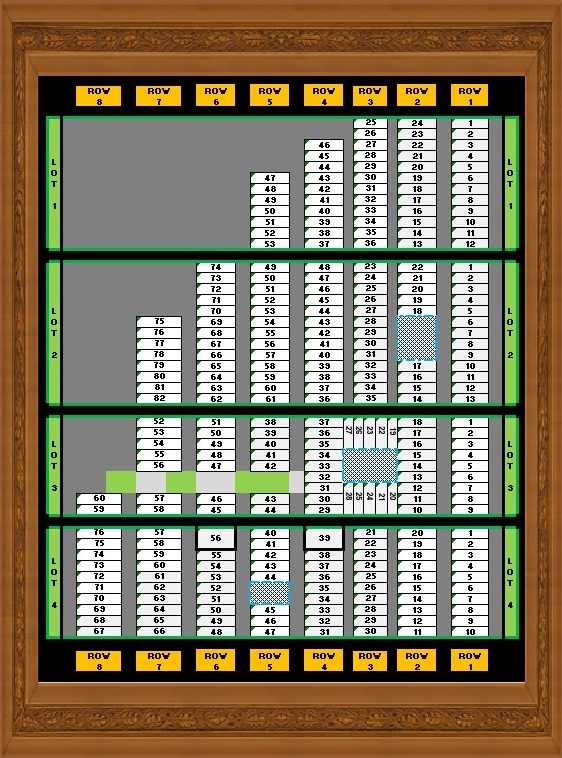
|
Chauncey Malcolm "Chan" Powers
b. October 26, 1864
Decatur, Macon County, Illinois
d. April 2, 1933
Decatur, Macon County, Illinois
buried: April 5, 1933

|

FATHER
Samuel St. John Powers
(1816-1885)

MOTHER
Caroline Maria Giles
(1820-1909)

NEVER MARRIED
|

NO CHILDREN
|
|
NOTE:
Chauncey's great-grandfather,
Andrew Powers,
fought in the
REVOLUTIONARY WAR |
NOTE:
Chauncey's great-grandfather,
Jonathan Avery,
fought in the
REVOLUTIONARY WAR |
|
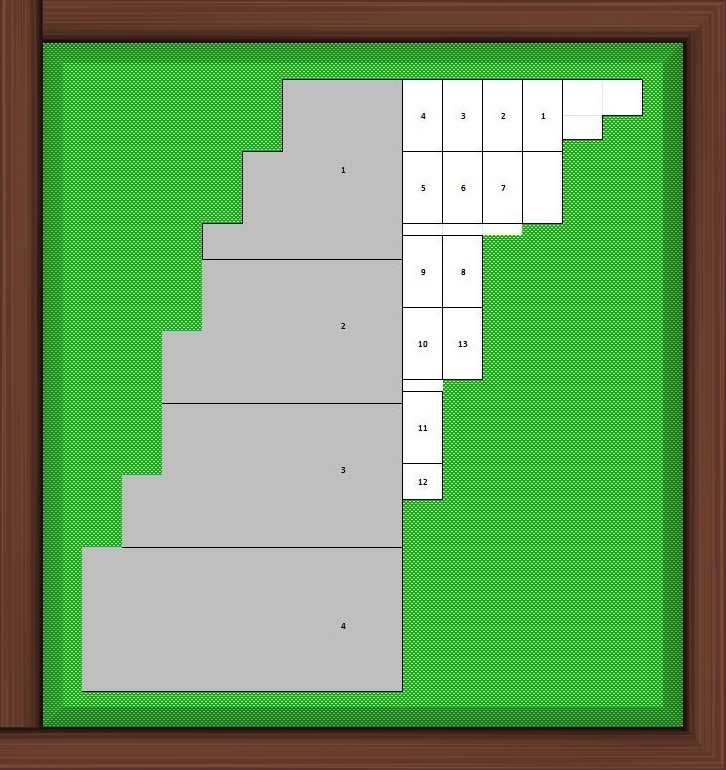
HISTORY OF POWERS ADDITION
Most of the land on the west side of the original Greenwood cemetery
was owned by Orlando Powers. As with many pioneer families, they chose a spot on their property to bury their loved ones. The spot the Powers family picked was right next to Block 8, at the west boundry of Greenwood. There are stones dating back to the 1850's.
Around 1878 that section of land was annexed to Greenwood cemetery. The lot looks like one big section, but is actually two. On the east side of the section is Block 8. On the west side is the Powers Addition. If you stand at the south end of the section and look north you will see 4 trees in a direct line with the fence to the north. That is the original property line of Greenwood.
|
TAKES PICTURES OF WILD DUCKS
Chauncey M. Powers Tells How He Tried To Get Fowl To Pose Before Camera.
IS FASCINATING SPORT
Winner of Grand American Handicap and Illinois Sweepstakes Knows Game
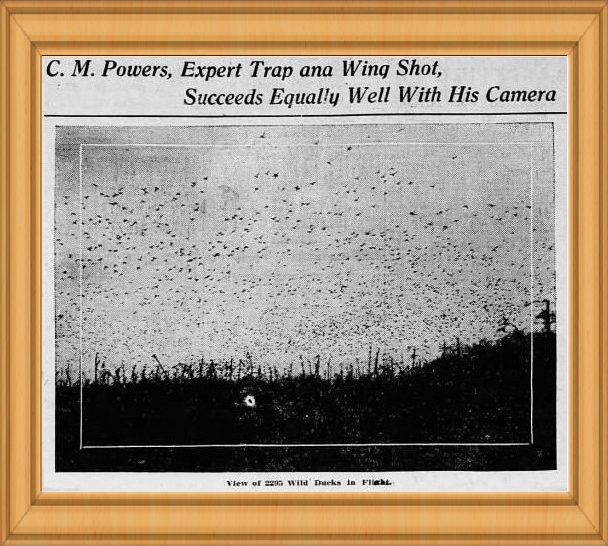 After winning recognition as one of the greatest trap shots of the world, and having no less skill as a wing shot in the field, Chauncey M. Powers says that photographing water fowl in the swamps is a sport more interesting than shooting and he has devoted only a few weeks to the new game. In the short time that he has been photographing water fowl, Mr. Powers has secured some negatives which would be the pride of men who had been in that study for many years. He says that the science of photographing, the successful photographing of water fowl in the swamps, requires more care, more patience and greater skill than anything he ever experienced in the line of shooting, and because of the difficulties he finds it more fascinating.
After winning recognition as one of the greatest trap shots of the world, and having no less skill as a wing shot in the field, Chauncey M. Powers says that photographing water fowl in the swamps is a sport more interesting than shooting and he has devoted only a few weeks to the new game. In the short time that he has been photographing water fowl, Mr. Powers has secured some negatives which would be the pride of men who had been in that study for many years. He says that the science of photographing, the successful photographing of water fowl in the swamps, requires more care, more patience and greater skill than anything he ever experienced in the line of shooting, and because of the difficulties he finds it more fascinating.
Big Swamp Along River
With his brothers, Theron A. and Frank S. Powers he is one of the owners of more than 1000 acres of scamp land lying contiguous to the Illinois river and there he made his initial shots with a camera, snapping water fowl in flight. The work of photographing wild ducks, the difficulties and the work necessary to get satisfactory results, are best understood by those who are fond of the sport of duck shooting, for the hunters know the difficulty of getting close enough to the subject to get an image on the camera plate, for the camera man must come closer to the duck than it is necessary for the man with the gun, for he can work at long range.
Ducks Are Shy
One who has been in a "blind" waiting for a flight of ducks, knows that frequently the slightest motion on his part, when the ducks are half a mile distant, is sufficient to give the warning and they will change their course just enough to miss the moving object which excited their suspicion. The hunter must be rigid, without motion. When it is so difficult to get them within gunshot, how much more difficult it is to get the ducks within range of the camera may be understood by those who have never shot from a "blind." Shooting, it is necessary only to get the ducks within 40 to 60 yards of the "blind," on any side, to the right or the left, or straight up, it is all the same to the hunters and he'll take the shot, but in photographing the water fowl it is necessary to get the ducks or geese to come directly to a certain spot, face the camera, and look pleasant, for their motions are so rapid that it is impossible to get results unless the camera has been placed, properly focused, and the duck coaxed to the spot where it is within focus.
Makes Experiments
Within the limits of the swamp of which he is the owner, Mr. Powers made his first experiments. No man knew better than he did just how shy ducks are and his preparations were made accordingly. The fact that he built "blinds," baited the ducks to the spot covered by the camera, and then had the chagrin of seeing them came within three feet of his person and outside of the line of the camera, did not deter him from making other attempts. His experiments in coaxing ducks in front of his camera has demonstrated possibilities that he would have been inclined to doubt prior to the time that he took up the work. Experienced hunters will scout the statement that if a man stands motionless, it is possible to coax not one, but hundreds of ducks to within 30 feet of the place where he is standing. But that was one of the things that Mr. Powers demonstrated, just to show that it could be done - nothing more, for he did not attempt to use the camera, much less his gun.
Grow Corn for Fowls
On their swamp the Powers brothers grow a little corn solely for feeding the wild fowl. Their cabin stands on the high ground. In front of the cabin is a corn crib standing at the edge of the swamp. In front of the corn crib is the corn field. Last fall, following the long continued rainfall, the field was covered with water. Out in the field after husking time there had been scattered a lot of corn for the ducks. One evening the Powers brothers stood near the corn crib in front of their cabin and listened to the noises of the ducks feeding. The fowl were coming toward the cabin. They stood still to "see what would happen." Gradually the ducks came out of the flooded field, eating corn as they came, and finally to the water's edge. Failing to find any corn on the ground, they slowly worked their way back into the corn field. There was not only a single duck within a few feet of the silent hunters, there were scores of them. Just to see how close he could tempt the ducks, the next day C. M. Powers scattered a line of corn from the field directly to the corn crib. That evening he and his brothers took their stand within 30 feet of the crib and waited. When the ducks approached they stood rigid and silent. The water fowl came to within 30 feet of the place where they stood, so intent on eating the bountiful supply of grain that they gave no heed to the figures, the mere sight of which, according to some accepted theories, will frighten the birds. When they had eaten all of the corn in sight, the ducks turned back into the corn field. There had not been a motion to disturb them and they retired as slowly as they had come. When the last duck had disappeared in the corn field, the brothers looked from one to the other as if questioning the truth of what they had seen, for they had not been prepared to believe off hand that such a thing was possible.
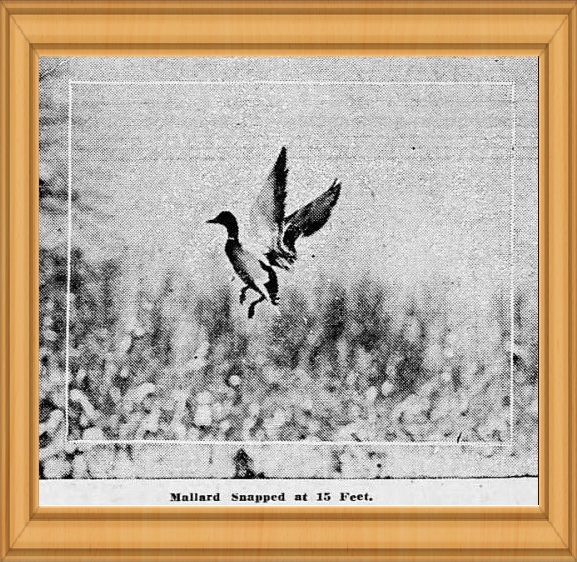
Builds a "Blind."
Don't believe from that experience that wild ducks are dull and easily deceived. Several days later perhaps, straight into the corn field in front of the cabin, C. M. Powers went, and began building a "blind" from which he hoped to take some pictures. A "blind" for photographic work is quite different from the "blind" rigged by the shooter. The latter is necessary only as something in which to hide until the time comes to rise and shoot, if the hunter prefers to shoot standing. The photographic "blind" must be so arranged that the student is wholly concealed, but he must leave open a space through which his camera may cover the subject. Mr. Powers cut the corn stalks and built a "blind" closely resembling a shock of corn. After scattering bait so that the feeding ducks would come within the focus of his camera, he went inside and waited. The ducks came, following the corn line which had been carefully arranged. They saw the "blind" and recognized the changed conditions. They didn't come within range of the camera, but circled the "blind" and fed behind it. After he had baited the line, he had some corn in his hands and that he dropped just before he took his position in the cover which was entered from the rear.
Hears but Doesn't See
The ducks came up behind. He could hear them talking and splashing about in the water, but did not dare to turn his head to look and see where they were. Understand that the man with a cmera does not look directly at the ducks. He looks down into the "finder" of the camera nd sees the fowl only when the image is reflected in the "finder." All the time gazing directly into the "finder," hoping that some one of the fowl would come within range of the camera, he sat silent and motionless. Finally the noise of the feeding ducks was so close that without changing his position, merely looking sidewise to his right, he saw within reach of his arm a hen mallard duck, She was busy tusseling with a small piece of an ear of corn from which the grains had not been shelled. Mr. Powers make no attempt to touch her. When she and the other ducks had eaten all of the corn within their reach they went back in the direction whence they came and he did not make a motion that caused any alarm. Neither did he press the button in an effort to get a picture, for not a single duck appeared on the "finder."
Tries It Again
In open water he built another "blind." This site was at a place where the water was less than two feet in depth. The structure was carefully made to appear as much as possible like a corn shock when seen from the open water side. On that side there was left in the solid wall of corn stalks an opening just large enough for the lens of the camera to protrude. That "blind" was made the week before Christmas. That night there was a heavy snowfall on the marsh. When he went next morning everything was covered with snow. On that account he wore a white jacket, a white cap and covered his camera with a white cloth, in order that there might be no sharp contrast in the general color scheme and give alarm.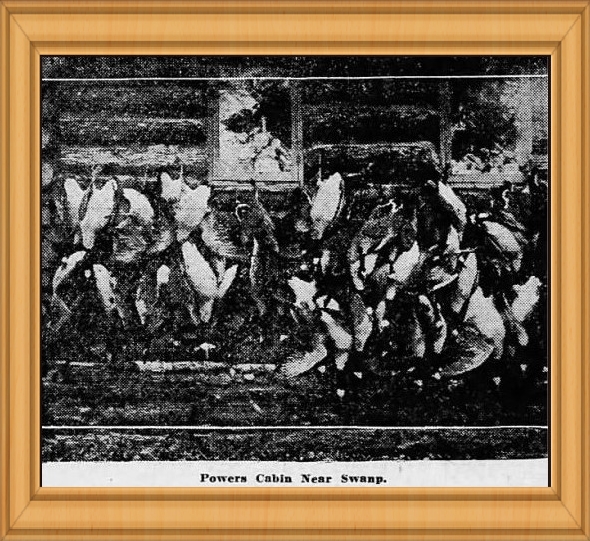
Snaps a Mallard
The sun was unclouded and presently he was pleased to note the approach of a mallard drake. He could observe the approach of the mallard by looking upward and not moving his head. The camera was focused on a spot fifteen feet in front of the blind. What luck! The mallard settled into the water at the exact point of the focus, the image showing distinctly in the finder. Instantly, however, the mallard saw the reflection of the sunlight on the lens and rose from the water, but the maching clicked and his picture had been taken. The photograph plate, reproduced here, shows the water dripping from the feet of the mallard. That effect is lost in the reproduction of the picture. Men who have hunted for years, experts like Rollo Heikes, have said that this photograph is one of a life time, and have marveled that it was possible to get within range of a mallard with a camera.
Would Not Come Near
Wild ducks are not only shy but they are wise, so wise that camera range seems sometimes almost an impossibility. Mr. Powers constructed one "blind" at a point which had been a good shooting ground, and then baited the place, hoping to get some pictures. But the ducks were shy. They went around him, settled in the water behindm and he could not get a picture. They came out through the overflowed corn land in fromt of the camera, but not close enough for a picture. After waiting for an hour or more and seeing no chance of getting a picture of the fowl in flight, for that was what he wanted, he concluded that he would change the speed of the camera shutter and take a picture of the flock in front of him, for a more prolonged exposure would be necessary. Slight as was the noise made in effecting the change, the ducks heard it and instantly there was a roar as hundreds of them sought safety from a fancied danger in flight. He snapped as it was. The fowls were at such distance that many of them were only specs on the plate. Mr. Powers counted them on the plate. To do that he drew lines from the top to bottom of the photograph and with the assistance of a magnifying glass counted the specs between the lines, one space at a time, until all had been marked. The total was 2295. Then he could not count all of them, for many were in the field, and there the plate was so dark that their forms could not be distinguished.
Send Out Scouts
The ducks know better than the hunters just where the good feeding grounds are to be found. Mr. Powers says that he has observed the ducks reconnoiter a place where there had been brisk shooting at one time. A pair of mallards would leave the big flock and scout across the feeding grounds, but showing no inclination to settle there, would go back to the main flock. Soon another pair of mallards would do the same thing and again the scouts would circle the suspected territory. After this had been done several times and there was no disturbance, a pair or perhaps two pairs of mallards would suddenly leave the main flock and go direct to the feeding grounds as though they did no without any regard for the consequences. The big flock apparently knows the exact moment when the advance guard has settled in the water, even though they are out of sight and hearing, for at that moment almost as one they will rise in flight and pour pell mell into the feeding grounds without a thought of what might happen. The experiment of the scouts and the final action of the advance guard was all the assurance that they wanted that the proceeding was a safe one.
Takes Many Pictures
Mr. Powers has taken pictures of a number of camp scenes -- bags of game, etc. One picture, a brace of wild geese is beyond question a work of art. An enlarged copy of this picture was recently shown in a downtown display window and excited much favorable comment. The birds seem to be carved bodies, and stand out, showing the shadows beneath. In addition the exact color of the plumage is reproduced. He declined a handsome offer from a publishing house for the negative.
Recently C. M. Powers was invited to become a member of the All American gun squad, which will go to Stockholm, Sweden this uear to compete in the international trap shooting contests, but he declined the invitation. During the last 12 months he has made no public appearance at the traps. He does not say that he has abandoned that game, nor does he say when he will again enter the list. He has a record unequaled. At one national meeting held in Chicago winnig both the Grand American Handicap and the Illinois Sweepstakes. He is a charter member of "The Indians," a club composed of a few of the high record men at the traps and in that organization is known as "Chief Wipestick."
It seems odd that after winning and holding such high place as an expert marksman, both at the trap and in the field, probably having no superior as an all around shot in the country - it seems odd that such a man who has shot for the pure love of the sport, should find more excitement and interest in the camera. He says that is what he has found, but, even so, it does not follow that he will altogether abandon trap or field shooting.
The Decatur Herald
(Decatur, Illinois)
18 FEB 1912 * page 16 |
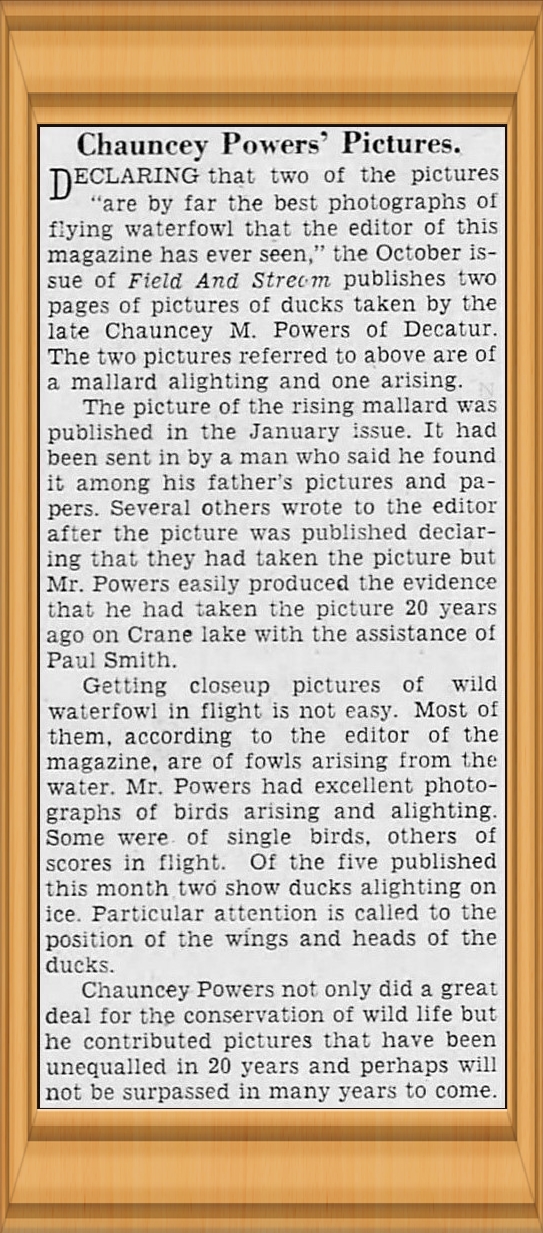
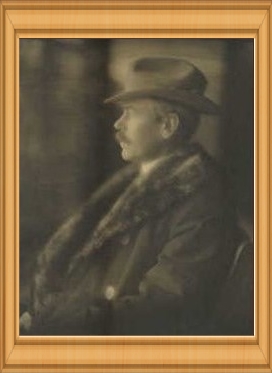
The Decatur Daily Review - (Decatur, Illinois) - 15 SEP 1933 * page 6
|

The Decatur Herald
(Decatur, Illinois)
3 APR 1933 * page 5
|
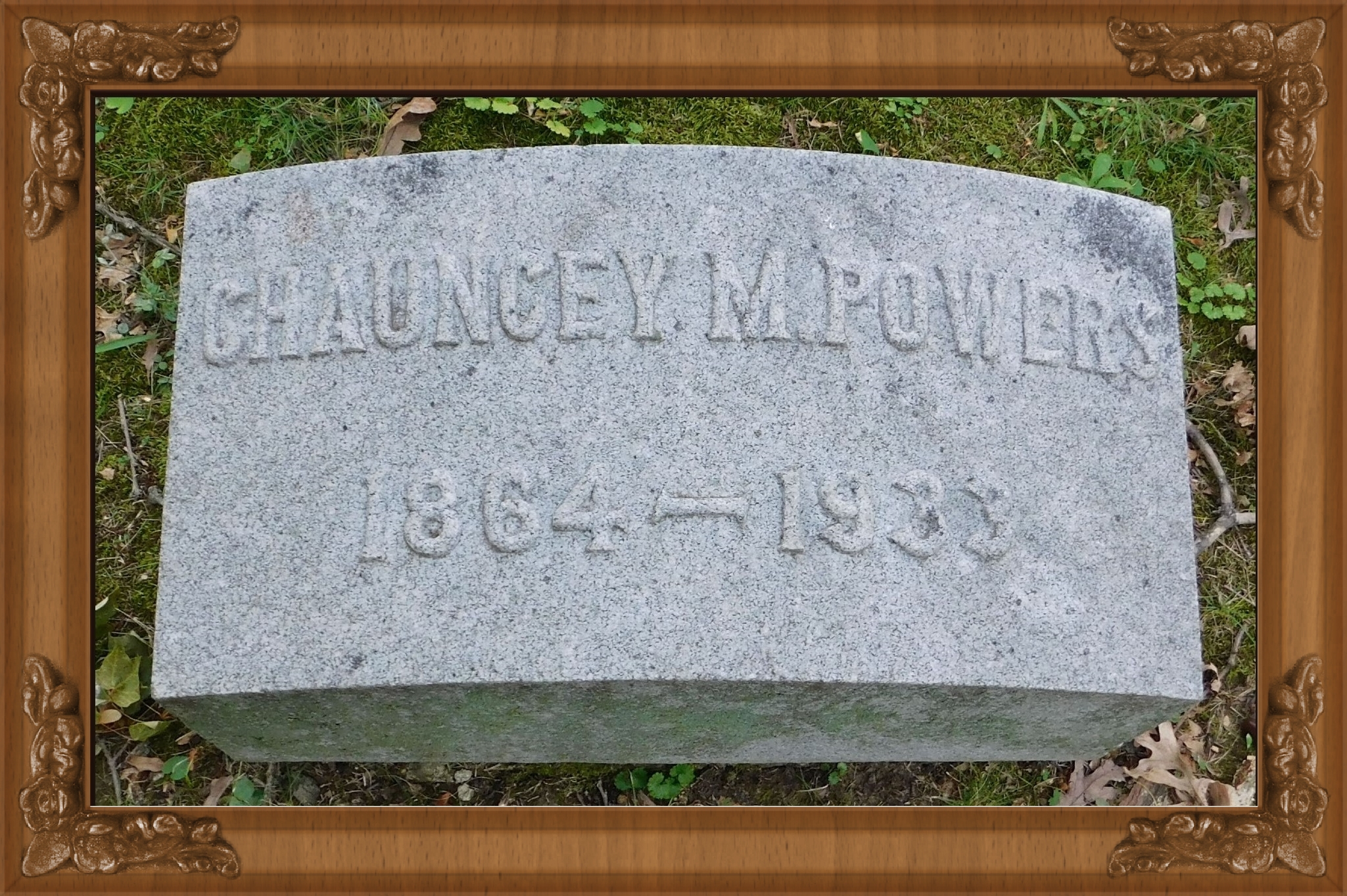
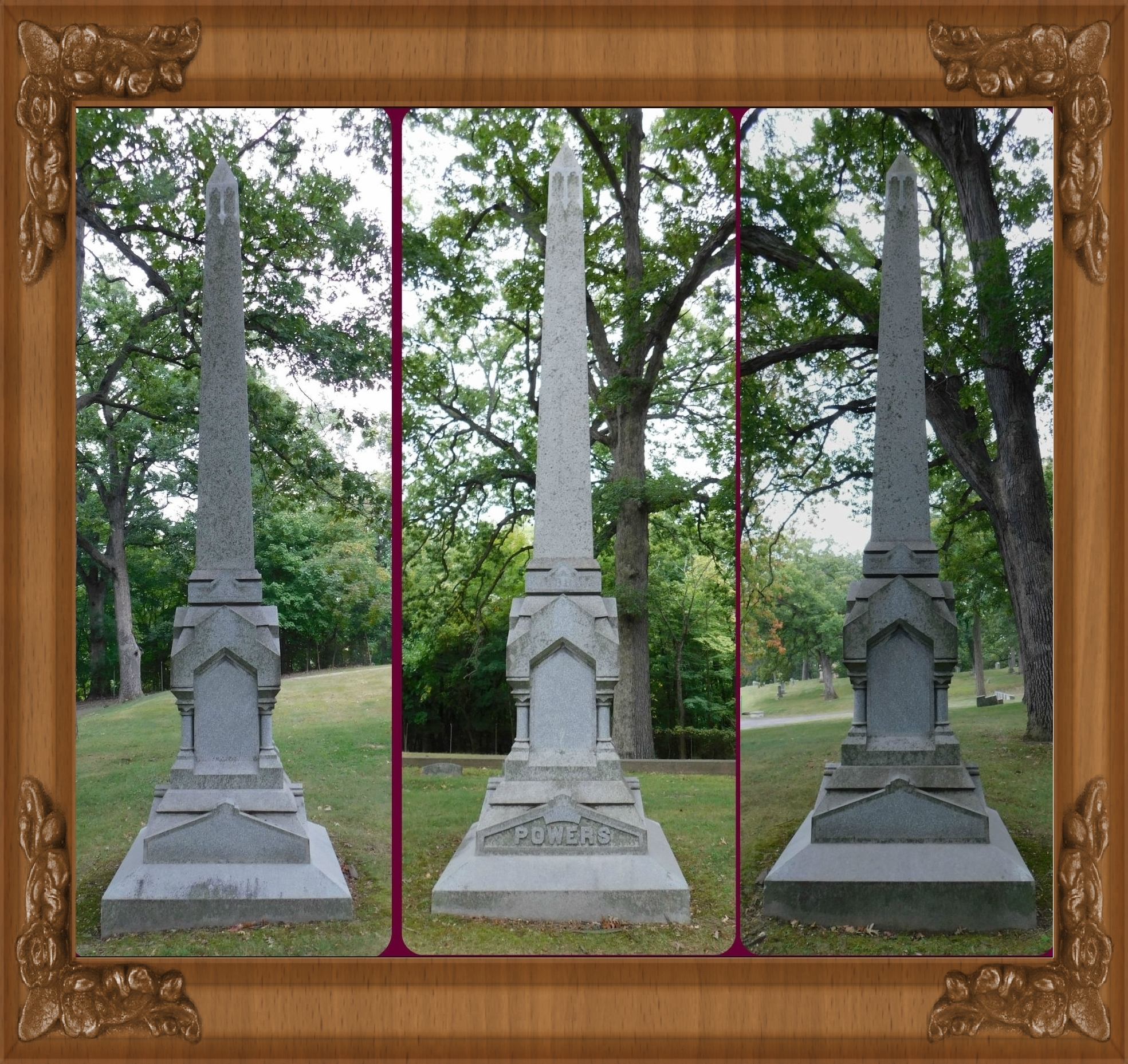
SAMUEL ST. JOHN FAMILY STONE


|
| |
|
|